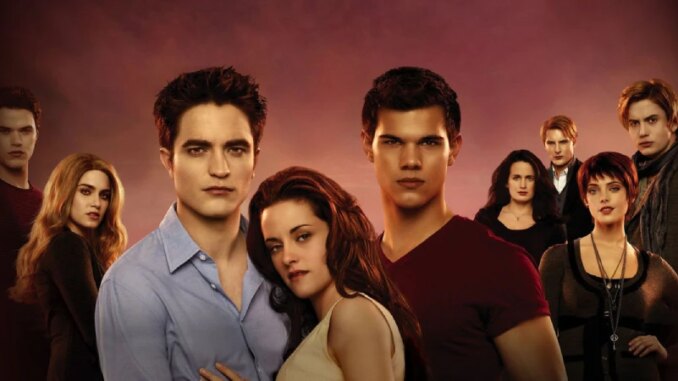
Re-evaluating The Twilight Saga: A Glittering Lightning Rod
The name “Twilight” still sparks a visceral reaction, even a decade and a half removed from its cultural apex. For many, it evokes a cringe, a dismissive eye-roll at its perceived literary failings and problematic themes. For others, it conjures a warm nostalgia, a portal to a world of forbidden romance, supernatural allure, and the fervent pulse of adolescent desire. To re-evaluate The Twilight Saga today is to peel back layers of pre-conceived notions, to understand the potent alchemy of its success and the enduring sting of its controversies, moving beyond the simplistic binaries of “good” or “bad.”
At its heart, Twilight‘s meteoric success was rooted in its uncanny ability to tap into the wellspring of adolescent yearning. Stephenie Meyer crafted a narrative that, for millions of young readers and viewers, felt tailor-made for their burgeoning emotional landscapes. First and foremost, it offered unabashed escapism. In Bella Swan, an “everywoman” blank slate, readers could project themselves into a world where the ordinary meets the extraordinary. She was chosen, not just by one, but by two impossibly beautiful, powerful, and mysterious supernatural beings. This was the ultimate wish fulfillment: to be seen, to be desired, to be protected by an ancient, immortal love, or a fiercely loyal, warm-blooded companion. The mundane small town of Forks became a canvas for epic, life-altering romance, far removed from the anxieties of homework and social cliques.
Beyond escapism, Twilight perfected the art of supernatural romance. Vampires and werewolves, once creatures of pure horror, were re-imagined as objects of desire. Edward Cullen, with his chiseled features, brooding intensity, and internal struggle against his predatory nature, embodied the dangerous but devoted lover – a trope irresistible to its target demographic. The forbidden nature of their love, the constant threat of danger, and the promise of eternal devotion created an intoxicating narrative pull. Meyer’s prose, often criticized for its simplicity, was precisely what made it accessible and immersive. It was easy to read, easy to fall into, and its episodic structure in the books made it feel like a cherished secret diary. The books spawned a film franchise that brilliantly cast new faces like Kristen Stewart, Robert Pattinson, and Taylor Lautner, whose on-screen chemistry (and off-screen speculation) further fueled the global phenomenon, turning the saga into a cultural touchstone that dominated conversations, merchandise, and box office charts.
Yet, for every fervent fan, there was a vocal critic, and The Twilight Saga became a lightning rod for intense controversy. The most prominent critique centered on the problematic relationship dynamics and Bella’s perceived lack of agency. Bella was often seen as a damsel in perpetual distress, her identity seemingly defined by the men in her life. Her primary goal, across four books and five films, was to become a vampire, not for personal ambition or self-discovery, but to be eternally with Edward. Edward, despite his romantic appeal, exhibited controlling behaviors – watching Bella sleep, dictating her friendships, and making decisions for her “safety.” Critics argued this romanticized possessiveness and dependence, presenting it as ideal love to a young, impressionable audience, fostering a potentially unhealthy template for relationships.
Furthermore, the subversion of classic vampire lore infuriated genre purists. Meyer’s vampires didn’t burn in the sun; they sparkled. They didn’t sleep in coffins; they were perpetually alive. This reinvention, while integral to their romantic appeal, was seen as sacrilege, transforming creatures of darkness and terror into glittering, angst-ridden adolescents. The writing itself often came under fire for its prosaic style, repetitive descriptions, and perceived lack of literary merit. Beyond the prose, the broader thematic implications sparked debates about feminism, body image, and even abstinence, as the saga navigated Bella’s journey from human to vampire wife and mother, often through a lens that many considered regressive.
Re-evaluating Twilight in the present day allows for a more nuanced perspective. While many of its criticisms remain valid – the uneven pacing, the clunky dialogue, the troubling relationship tropes – it’s also crucial to acknowledge its undeniable cultural impact. It wasn’t just a series of books and films; it was a phenomenon that reshaped the young adult landscape. It proved the immense market power of female-driven fantasy romance, paving the way for franchises like The Hunger Games, Divergent, and countless others. It brought supernatural fiction to the mainstream in a way few other series had, broadening the appeal of genres often relegated to niche markets.
Perhaps, too, we can now appreciate the comfort and simple joy it offered to its target audience without needing to dissect its every flaw. For millions, Twilight was a safe, exciting escape during formative years, a shared cultural experience that fostered communities and friendships. Its flaws, though real, do not entirely negate the powerful emotional connection it forged with its demographic.
In conclusion, The Twilight Saga remains an enduring, complicated legacy. It was an undeniable commercial triumph, born from a potent cocktail of relatable yearning, fantastical romance, and astute market timing. Yet, it simultaneously ignited fervent controversies, particularly regarding its portrayals of gender dynamics and its reimagining of established lore. To re-evaluate Twilight is not necessarily to exonerate its flaws, but to understand its undeniable power and place in pop culture history. It stands as a glittering, paradoxical mirror, reflecting both the dreams and the anxieties of a generation, forever a testament to the fact that success and scorn are often two sides of the same compelling, unforgettable coin.
